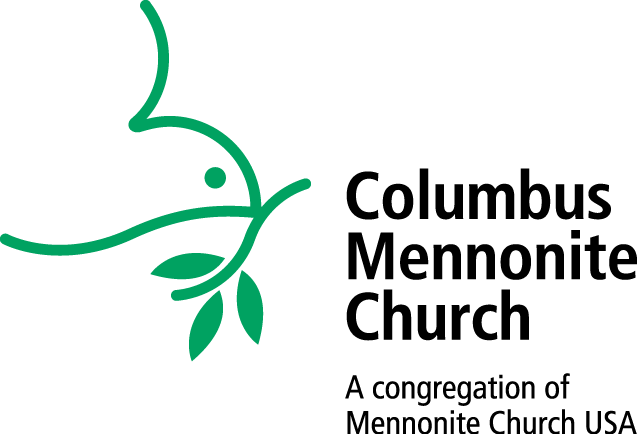Awake in the dark: Welcoming the season of Advent | Advent I | December 3
It’s impossible to know with certainty why the birth of Jesus came to be linked to the date we now celebrate it, December 25. Early Christians didn’t find it particularly important to celebrate at all. They focused instead on Jesus’ crucifixion and resurrection. The Gospels link those to the Jewish festival of Passover, in the spring. By the year 200, various writings suggested the date of Jesus’ birth to be January 2, March 25, April 18 or 19, May 20, November 17 or 20. (Elesha Coffman, “Why December 25?”. Christianitytoday.com. August 8, 2008).
Add in December and you’ve got half the months of the year.
The date of December 25 became more solid in the West in the fourth century, as the church increasingly took on the role of being the glue that held together the Roman world. December 25 had been the Roman date for the winter solstice, the longest night, shortest day, of the year, when the dwindling sunlight began to reclaim hours of the day.
In the fourth century the North African bishop Augustine said this in his Christmas sermon: “Hence it is that He was born on the day which is the shortest in our earthly reckoning and from which subsequent days begin to increase in length. He, therefore, who bent low and lifted us up chose the shortest day, yet the one whence light begins to increase.” (Augustine, Sermon 192).
Of course, had Augustine been a South African bishop, he would have needed to find a meaningful connection between Christ’s birth and the summer’s longest day, when the most light shines on the earth.
Regardless, for us in the Northern Hemisphere, the birth of Christ, and the season of Advent leading up to it, now correspond with the darkest days of the year.
We regularly associate darkness with the bad,…
The sheep and the goats, continued… | November 26
Text: Matthew 25:31-46
This is the last Sunday of the lectionary cycle, meaning we’re at the end of the church calendar. Next week is Advent 1, the beginning of the new church year.
This is called “Christ the King Sunday,”or “Reign of Christ Sunday.” In closing out the year, the lectionary goes all in with it really being the end. It gives us a judgment scene, the story that Jesus tells in Matthew 25, commonly known as the sheep and the goats. Or, commonly known for the phrase “the least of these,” which becomes the surprise criteria by which people are judged. “Whatever you’ve done to the least of these, you’ve done to me,” says the king/judge/son of man/human one/Jesus.
It’s an important line for social justice minded Christians who believe faith has to do with how we live in this world, especially toward vulnerable people. Yet the scene of a gentle and sacrificial savior turned eternal judge also has its own problems. They are problems that the story itself begins to raise, as the sheep and the goats both talk back to the king, questioning why such an arrangement has been made.
I invite you to listen closely to the reading of the text, and then enter with me into a purely speculative continuation of the story.
—————————
Matthew 25:31-46
31 “When the Son of Man comes in his glory, and all the angels with him, then he will sit on the throne of his glory. 32 All the nations will be gathered before him, and he will separate people one from another as a shepherd separates the sheep from the goats, 33 and he will put the sheep at his right hand and the goats at the left. 34 Then the king will say to those at his right hand, ‘Come, you that are blessed by my Father, inherit the kingdom…
“Wisdom has built her house” | November 12
Texts: Proverbs 9:1-6; Matthew 11:28-30
There is a house with a table, set for company. On this table is a feast: Wine and bread and meat. Everything that makes for a good meal.
The doors of this house open wide, always unlocked, ready to receive whoever walks in.
It’s not a secret. It’s not a hidden place, tucked in some out-of-the way grove. There are no fences or gates, no passcodes.
The owner of this house is Wisdom. She built it. She set up the posts, leveled the beams, designed the way this room flows into that one.
Wisdom has built her house and gives an open invitation. She walks through the city, calling out. She cruises the countryside, searching for takers. She opens her contacts and selects “Send All.” Wisdom has issued an invitation: Come to me, feast, rest, learn.
Even better, the house that Wisdom built will come to you. Look for it, and there it is. Occasionally it shows up when we’re not even looking.
A few weeks back I had one of those all too rare moments where I may have briefly stepped inside this house and glanced around.
Back in the spring when I was writing the Sabbatical grant I included funds for a new bike. Thankfully, the Lilly Foundation deemed this worthy of Sabbatical activity. They issued the full grant check, with the encouragement to begin making purchases and reservations and whatever else in preparation for next summer’s Sabbatical. So on a Monday afternoon in the middle of October, Abbie and I headed down to Baer Wheels, on High Street, to purchase a bike I had been eyeing.
This moment began with a stray thought, about half way down the sidewalk, looking at the trees on the street. It was a beautiful fall day and even though the trees still had almost…
Through the Desert Goes Our Journey | All Saints/Souls | November 5
Text: Genesis 21:8-21, Revelation 3:7-13
The Hebrew Scriptures trace the story of the people of Israel from their beginnings, into and out of slavery in Egypt, into and out of their desert wanderings, into and out of nationhood and kingship, into and out of exile, and the diaspora that follows. This is the story of peoplehood into which Jesus and his early followers were born. It’s the one that non-Jews like us get adopted into. The story begins with a couple, Abram and Sarai, who miraculously have a son in their old age. The lineage of the people of Israel is traced through that son, Isaac, the child of promise.
But one of the endearing and enduring features Scripture is that it also includes stories that don’t fit so well into that main narrative. Some of them are even shameful, or at least embarrassing to tell. The story in Genesis 21 about Hagar and Ishmael is one of those.
Ishmael was the oldest son of Abraham, born through his slave woman Hagar. It was Sara’s idea to give Hagar to Abraham. Sara was unable to have children, and so a child through Hagar would serve as her own, giving her husband an heir. When Sara does conceive in her old age, she gives birth to Isaac. She quickly feels a rivalry between her and Hagar, her son and the older Ishmael. Her solution is to have Abraham send Hagar and Ishmael away, so Isaac can get the family’s full inheritance. Abraham gets a message from God that, when it doubt, listen to your wife. He gives Hagar and his oldest son some bread and water, and sends them away, into the desert, where they wander until they have nothing left to drink. It must not have been much bread and water.
It’s…
The Crowd, the Cross, and Counting the Costs | Sanctuary V | October 29
Worship Theme: Sanctuary People
Text: Luke 14:25-33
Did Christ count the steps between the crowd and the cross?
Did he calculate profits, cross reference with loss,
Adding the numbers, subtracting the costs?
For where he was headed, how much should he gloss-
Over the fine print.
Eyes that are blind, squint.
Hide from the shine; glints-
Of light he’s been tryin’ to hint
At all along.
We shift focus instead to foot-prints.
Sandy witnesses, silently assuring us Jesus shoulders our struggles.
“That’s where he carried me” we softly whisper to soothe our sleepy souls
But Christ turns to the crowd and confronts us with the truth that that set of solitary footprints,
That’s where we turned back,
Like wandering Israelites pining for Egypt’s security,
trusting our lives not to the necessity of Truth,
but to the stuff we think will sustain us.
Did Christ count the steps between the crowd and the cross?
Did he number the feet that would fall away, step by step?
Knowing when each one
Would decide that it was too
Much to hold on to that three-
Days-later kind of hope (be)fore
The fist-bumps and high-fives
Of a crowd high on (six)cess
And good news would realize that seven
Days of Jesus can make one weak,
No matter how much manna they ate.
Excuses, “not now”s, “no”s, “nyet”s, and “nein”s
Begin to add up, and all too of(ten)
Christ gets to the eleventh-
Hour and finds that even the chosen twelve
have disappeared like floor thirteen.
While all it took was some stranger things to make four teens
Believe in an upside down…kingdom.
Did Christ count the steps between the crowd and the cross?
Did he contemplate that well worn path between “hosanna” and “crucify him?”
Did he consider that maybe, just maybe, he needs a better marketing department?
A seeker-sensitive savior should never use words like “hate.”
A seeker-sensitive savior should never make us squirm with talk of torment on crosses,
Or counting our losses,
Treating possessions like dross, as
Though salvation should exhaust us.
A seeker-sensitive savior…

